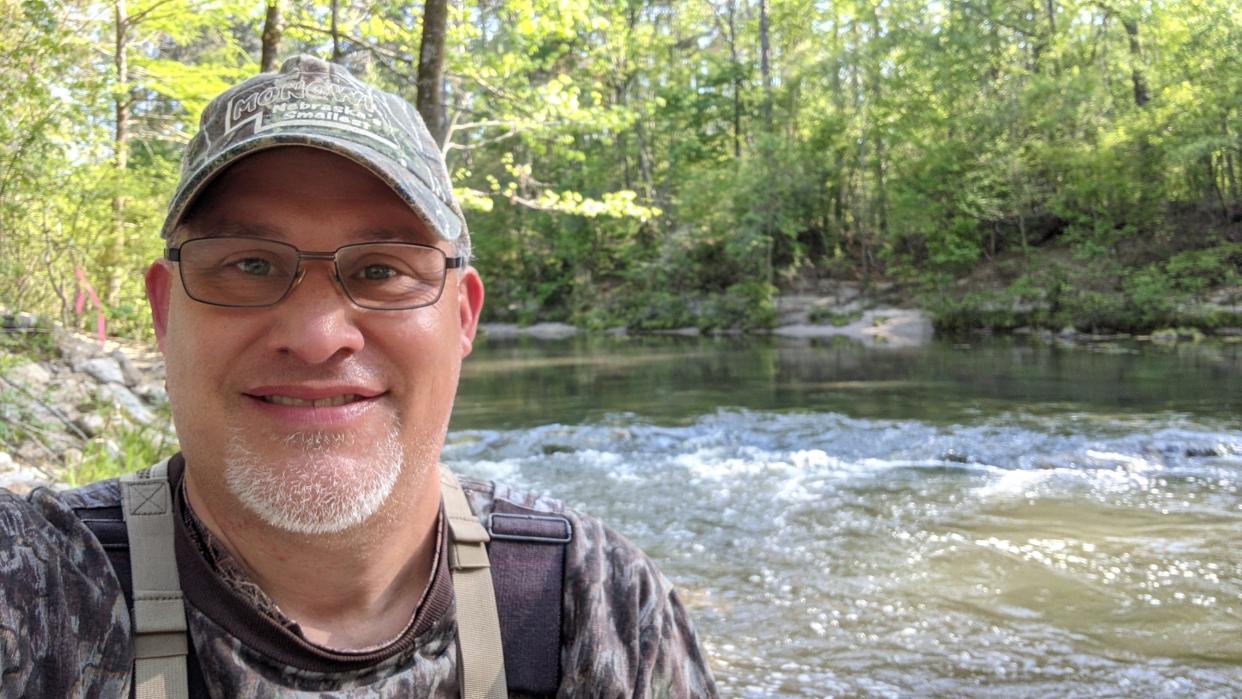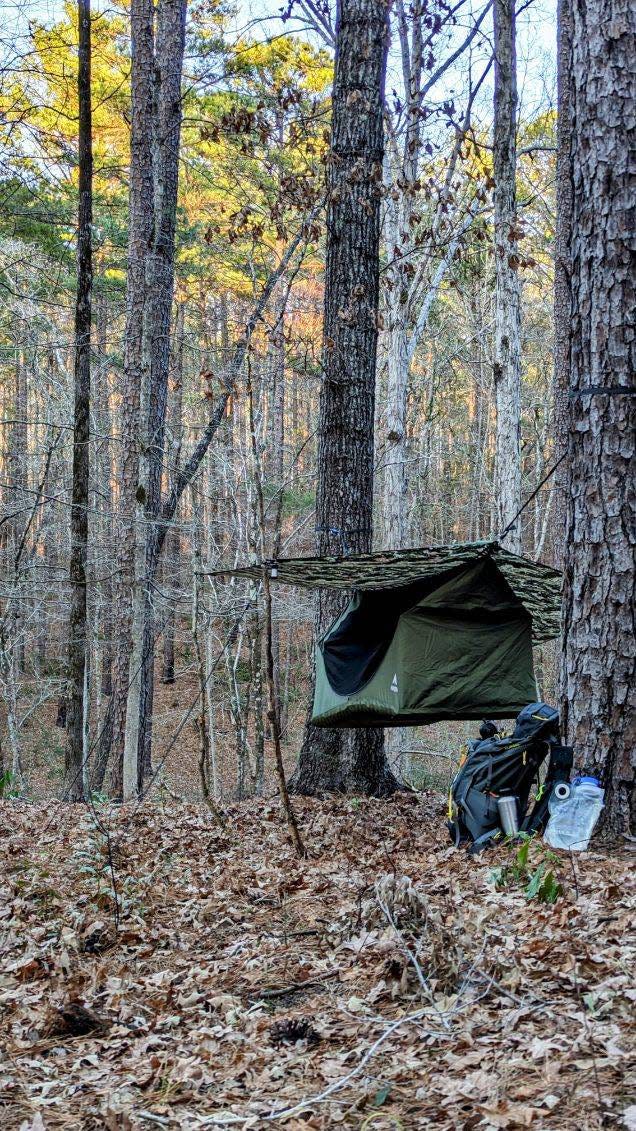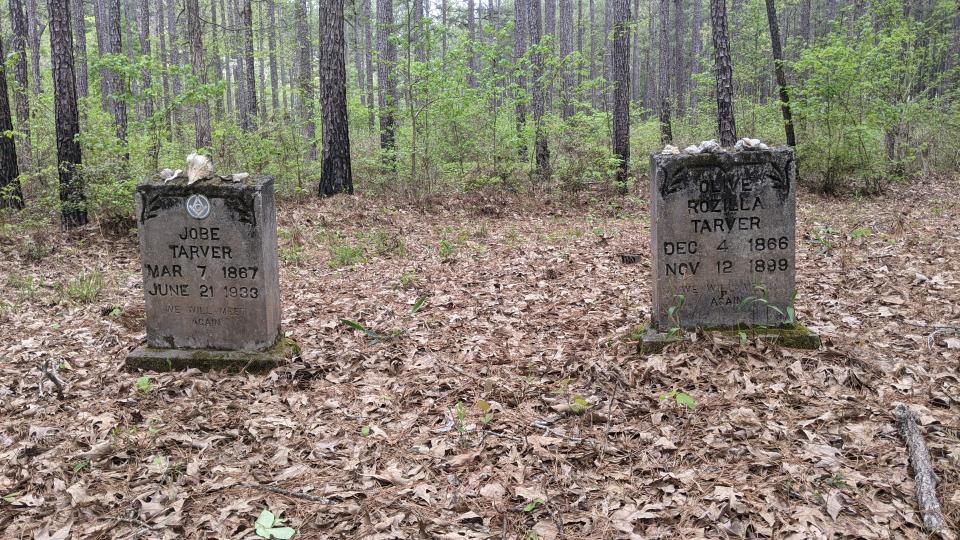Wild camping in Kisatchie has a lot to offer off the beaten path

There are many acres within the Kisatchie National Forest to explore. All people have to do is get off the beaten path, and go wild camping.
Wild camping is the term given to primitive camping at an unestablished backcountry site off-trail without fee utilizing self-sustaining equipment, recreating lawfully and leaving no trace, explained Scott Owens, who is the leader of the (Louisiana Mississippi) LAMS Wild Camp Alliance. The Facebook group is an online community for outdoor enthusiasts to share tips, photos, locations and more.
“Wild camping is different from destination camping, and it’s much more common out west than in the South,” Owens says in a press release by the Moore Agency. “The most common barriers are not knowing where to go or what makes a good camping site. We have a lot of free public land within a short drive of New Orleans, but it still takes forever to find good spots on your own. We’re doing the field work, beating the briars and dropping pins and GPS points on a map to give others a head start, whether they’re new to wild camping or experienced.”
Owens also developed Wild Camp South on YouTube where he showcases his work with maps, video and photography. He also has a podcast called “The Southern Wild Camp Show.”
The goal with hiking and backpacking is the same as wild camping which is to get out and enjoy nature. But hiking and backpacking have starting and end points, and people are always thinking about their time, said Owens.
“Serious hikers and backpackers, that’s all they think about is making their stops along the way, where they’re going to camp and ultimately when they’re going to get out,” he said. “Maybe they have to meet someone to pick them up. They’re always worrying about their time and almost running through the whole thing.”
With wild camping, the mindset is “hike less, camp more, explore everywhere,” he said.
In order to wild camp, Owens said there needs to be lawful land recreation and uninterrupted wilderness.
He also looks for level areas of interest and minimal brush vegetation. He also tries to keep his wild camps at least 250-1,000 yards hike in. Owens doesn’t follow trails or camp near a trail or designated backwoods campgrounds, but he does need road or trail access to wild camp.

“To make a wild camping experience aesthetically really good and nice, I look for mature hardwood delineation, topography, elevation and presence of a water source,” said Owens.
He incorporates mapping and orienteering and uses three methods of navigation for not getting lost: a cell phone with a small external charger, a real paper map and a compass. As long as you have a home base and its latitude and longitude coordinates, he said you can always get back to it from wherever you venture.
“Everything for me stems from mapping an aerial interpretation of GIS features and land features so generally where the rivers and creeks flow through is where I congregate most because I always want to include a water source near to a wild camp site,” he said.
Owens said a forestry term that fits into locating wild camp sites is called “stream management zones.”
He graduated from LSU with a degree in Forestry Management and worked for the Louisiana Department of Ag and Forestry for two to three years. He now works as a GIS analyst doing GIS mapping work.
Once he’s out in the wild, he says he explores and ventures where the underbrush is not harsh. He’s a big arrowhead hunter and has explored dried creek beds looking for arrowheads, fossils and rock. He also sees a lot more wildlife off the trail.
There are plenty of interesting things he’s found while wild camping, one of them being a small pond in the middle of Kisatchie that is one of his favorite spots.
“Around the pond is like a small levee that kind of goes up to keep the water in. But also on those little levees are these little humps. It was completely barbed wired in. Most of the barbed wire has fallen down now,” he said.
Kisatchie has an interesting history, he said. Kisatchie National Forest at one time was all fields.
“That could have been a farming homestead where a rancher or farmer, maybe, put the barbed wire around the pond. I find interesting stuff like that,” said Owens.

And there are cemeteries.
“When you’re in the Kisatchie running around, there are cemeteries blotted all over the place from the past,” he said. “Some are kept up well. Some are not. And I’ve come across really cool cemetery plots in the woods that you need a four-wheel drive to get to.”
He has mapped out 21 wild camp sites in the Homochitto National Forest in Mississippi and he is currently mapping out wild camp sites in Kisatchie.
Owens is working on two books, one for Kisatchie and one for Homochitto, that will be primers on wild camping. They will include guides for Wild Camp South’s camp locations, how to get there, how to navigate there, what you’ll need and what the terrain is like. All the wild campsites have been vetted.
“Everything has been done and thought out,” he said. “Other than a drought you’ll have water with normal water levels close to your wild camp site. You’ll have a nice flat space. You’ll have trees to hang your hammock, depending on what type of shelter you have,” he said. In the books, he discusses different kinds of shelters such as tents and tarps.
He likes to camp with people but mostly prefers to camp alone so he can recharge.
He tells his children that wild camping is his church.
“That’s my Cathedral. Dad needs to go off for a weekend and recharge his batteries,” Owens tells them.
Owens describes wild camping as an “unplugging of life itself.”
“Unplug from all the craziness, anxiety and stress that we are burdened with here today, especially with technology, although I do use parts of technology in my wild camp excursion,” said Owens. “I’m always refreshed and ready for the next week and the next hurdle when I come back from a wild camp trip.”
This article originally appeared on Alexandria Town Talk: Wild camping in Kisatchie has a lot to offer off the beaten path

